On October 29, 2024, the laying ceremony of the scientific expedition vessel Ivan Frolov project 23680 (factory number 02500), under construction for the Federal Service for Hydrometeorology and Environmental Monitoring of the Russian Federation (Roshydromet), took place in St. Petersburg at JSC Admiralty Shipyards (as part of JSC United Shipbuilding Corporation).
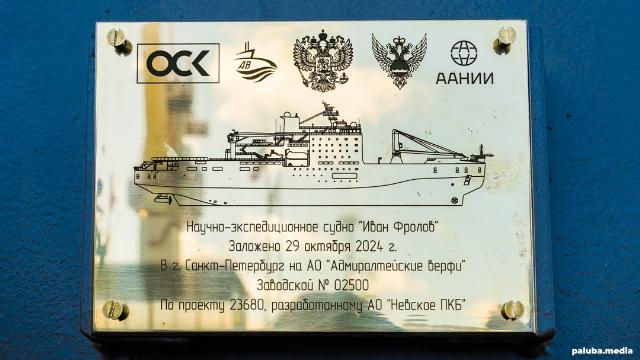
The mortgage board of the scientific expedition vessel Ivan Frolov of project 23680 (factory number 02500), laid down at JSC Admiralty Shipyards for the Federal Service for Hydrometeorology and Environmental Monitoring of the Russian Federation (Roshydromet) on 10/29/2024 (c) paluba.media
The contract for the construction of the scientific expedition vessel "Ivan Frolov" was signed by Roshydromet with the Admiralty Shipyards on March 6, 2023. The vessel, designed to fulfill the Antarctic program of the Russian Federation, will be operated by the Arctic and Antarctic Research Institute (AANI). Delivery of the vessel under the terms of the contract is scheduled for December 2028. The NES will perpetuate on its board the name of the famous oceanologist, corresponding member of the Russian Academy of Sciences Ivan Frolov, who headed the AAI for two decades. It is planned that the Ivan Frolov vessel will replace the current flagship of the Polar fleet, the scientific expedition vessel Akademik Fedorov, and will remain in service for at least 30 years.
The government decree on the allocation of 39.7 billion rubles in 2023-2028 for the construction of the Ivan Frolov NPP was signed by Russian Prime Minister Mikhail Mishustin at the end of December 2022.
The developer of the NES project 23680 is JSC Nevsky Design Bureau (as part of the USC). This is a universal vessel for the Arctic and Antarctic, providing the existing infrastructure and operation of polar stations and conducting scientific research, having the RSCM class (*) Arc7 (hull, machinery) [1] AUT1-C EPP ECO BWM (T) HELIDECK-H DE-Tier III Special purpose ship. The new NPP is designed to replace the personnel of Antarctic stations; logistics of Antarctic stations; unloading on an unequipped shore, ice barrier, solder; conducting marine scientific research in the ocean; waste and garbage removal.
The vessel of project 23680 will have a displacement of 25,308 tons and a deadweight of about 9,200 tons. The length of the largest vessel will be 164.8 m, the width is 26 m, the side height is 13.5 m, the draft along the structural waterline is 8.5 m. The vessel will be equipped with a power plant with full electric propulsion, including diesel generators and two screw steering columns with a capacity of 8 MW each. The full speed will be 16 knots.
Up to 20 laboratories will be located on board the ship, as well as a hangar for two helicopters and a platform that allows receiving Mi-8, Mi-38 or Ka-32 helicopters. Cargo capabilities will include receiving 2,500 tons of general dry cargo or 100 containers, 5,000 tons of diesel and aviation fuel, and 800 barrels of technical oil. Two 27-meter 50-ton bow cranes and two 27-meter 12-ton stern cranes will be installed for cargo operations. The ship's crew will be 70 people with the possibility of receiving 170 more scientific specialists and passengers.
Currently, the flagship of the fleet of AANIA and Antarctic expeditions is the scientific expedition vessel Akademik Fedorov, Finnish-built project 758, commissioned in 1987. To replace it, the Akademik Treshnikov NPP of project 22280 was built earlier at the Admiralty shipyards, commissioned in 2012, however, due to its smaller size and design flaws, it could not replace the Akademik Fedorov, which left the question of building a new large Antarctic NPP to replace the latter open to the present.
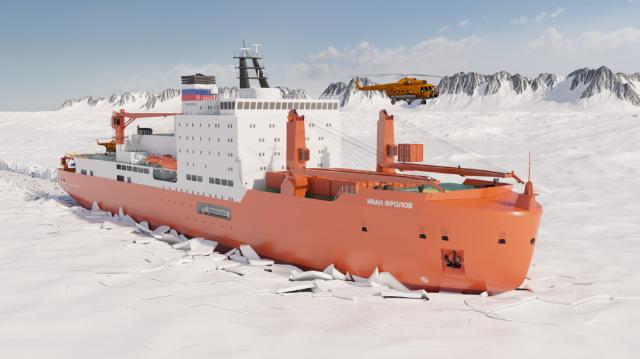
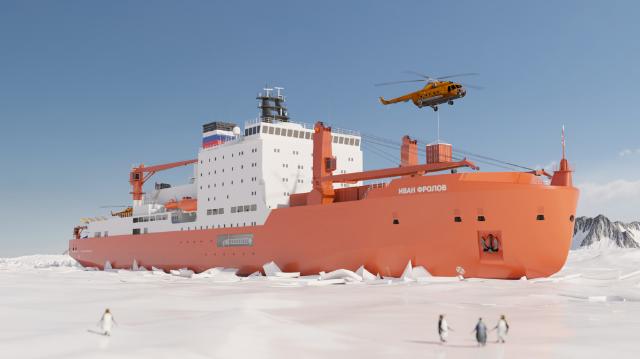
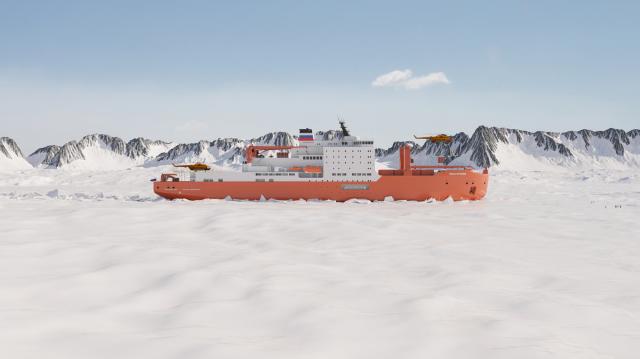
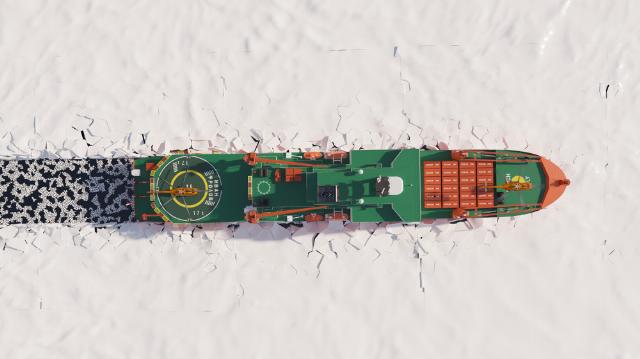
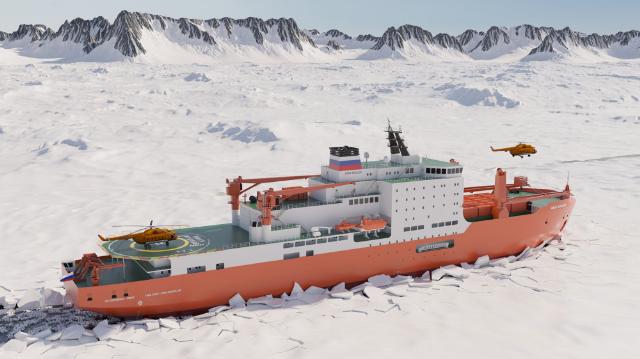
jpg" title="Render images of the scientific expedition vessel Ivan Frolov of project 23680 (serial number 02500), laid down at JSC Admiralty Shipyards for the Federal Service for Hydrometeorology and Environmental Monitoring of the Russian Federation (Roshydromet)">
Render images of the scientific expedition vessel Ivan Frolov of project 23680 (factory number 02500), laid down at JSC Admiralty Shipyards for the Federal Service for Hydrometeorology and Environmental Monitoring of the Russian Federation (Roshydromet) (c) JSC Nevsky Design Bureau
